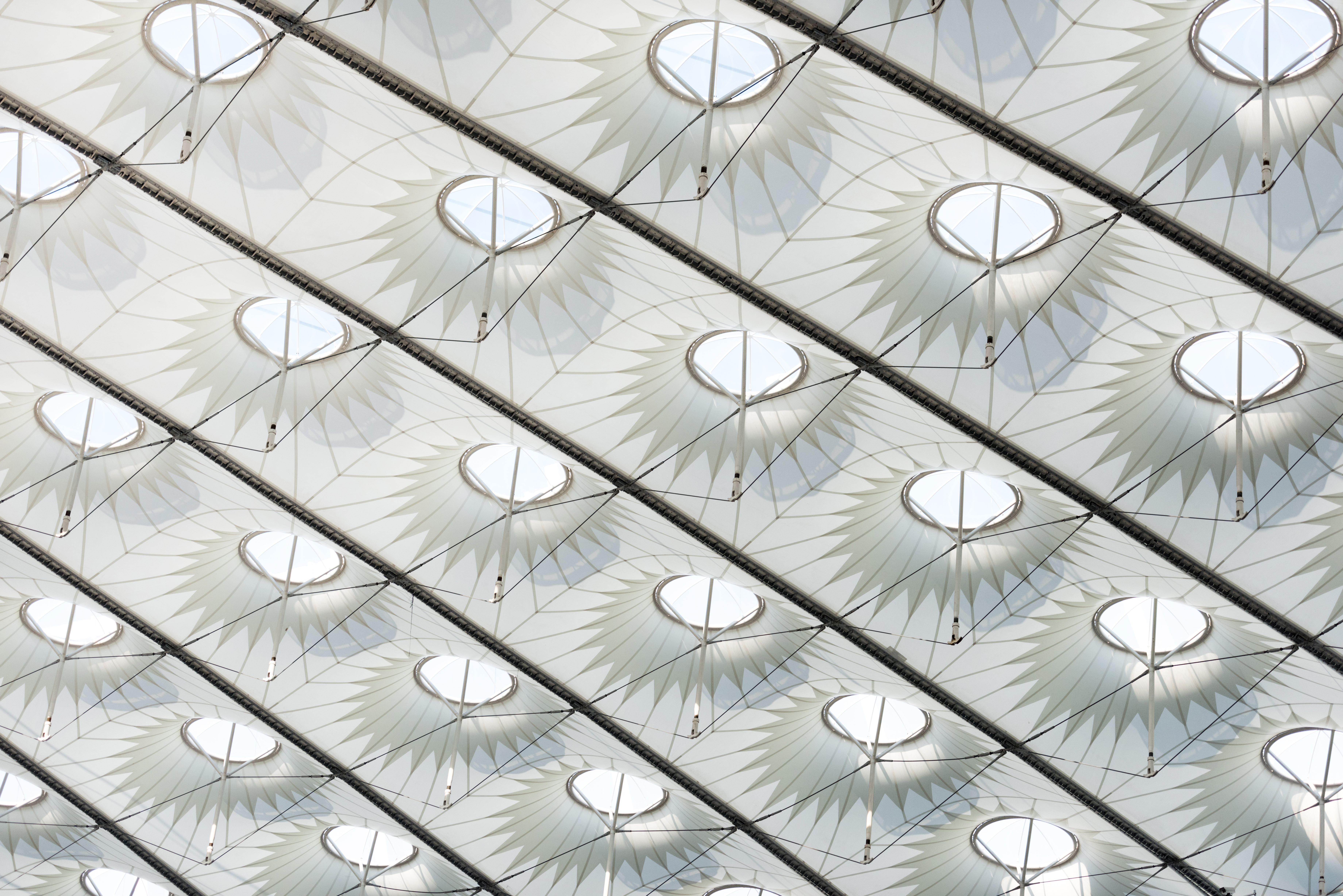Fabric ceilings have gained popularity in modern architecture and interior design for their versatility, functionality, and aesthetic appeal. Whether used in residential, commercial, or industrial spaces, fabric ceilings offer a range of benefits that make them a preferred choice for designers and architects. Here are the key advantages of fabric ceilings:

1. Aesthetic Versatility
Fabric ceilings allow for endless design possibilities. They can be tailored to fit any shape or size, making them ideal for creating smooth, curved, or three-dimensional effects. With a wide variety of colours, patterns, and textures available, fabric ceilings can be customized to match any interior theme, adding a modern and sophisticated touch to the space.
2. Lightweight and Easy Installation
One of the biggest advantages of fabric ceilings is their lightweight nature, which makes them easy to install. They require less structural support compared to traditional ceiling materials, reducing installation time and costs. Their lightweight construction also makes them a practical option for spaces with unique architectural requirements.
3. Enhanced Lighting Effects
Fabric ceilings are excellent for creating diffused lighting effects. They can be combined with LED or backlit lighting systems to achieve soft, even illumination, which enhances the ambiance of the space. This feature is particularly valuable in retail stores, offices, hospitality spaces, and exhibition areas where lighting plays a crucial role in setting the mood.
4. Acoustic Benefits
Fabric ceilings can improve the acoustics of a space by reducing noise levels and minimizing echoes. This makes them ideal for large, noisy environments such as auditoriums, conference halls, and open-plan offices. By combining functionality with style, fabric ceilings create a more comfortable and enjoyable environment.
5. Durability and Longevity
High-quality fabric materials are durable and resistant to wear and tear. They are designed to withstand environmental factors like moisture, UV exposure, and temperature changes, ensuring that they maintain their appearance and functionality for years. This makes fabric ceilings a cost-effective solution for long-term use.
6. Eco-Friendly and Sustainable
Fabric ceilings are an environmentally friendly choice. Many fabrics used in ceilings are made from recyclable or sustainable materials. Additionally, their lightweight nature reduces the overall carbon footprint associated with transportation and installation, contributing to greener design practices.
7. Easy Maintenance and Repairs
Fabric ceilings are low maintenance and easy to clean. Unlike traditional ceilings, they are less prone to staining, cracking, or damage. In case of any damage, the fabric panels can be easily replaced without affecting the rest of the ceiling, saving time and costs on repairs.
8. Flexibility in Applications
Fabric ceilings are suitable for a wide range of spaces, including residential homes, retail stores, restaurants, hotels, malls, hospitals, and exhibition areas. Their adaptability to different environments makes them a versatile solution for both functional and decorative purposes.
Conclusion
Fabric ceilings are more than just a design element—they are a practical and stylish solution for modern spaces. With their aesthetic versatility, acoustic benefits, durability, and sustainability, they offer a range of advantages over traditional ceiling materials. Whether you’re looking to enhance lighting, improve acoustics, or add a unique design element, fabric ceilings are an excellent choice for any project.
A fabric ceiling adds to the visual appeal, betters acoustics, and provides energy efficiency, all while being lightweight, customizable, and easy to install—transforming spaces with elegance, comfort, and practicality in a budget-friendly manner.